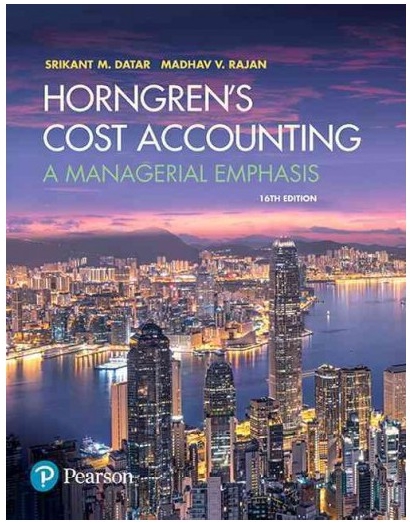Refer to the information in Problem 6-42. Budgeted balances at January 31, 2018 are as follows: Cash
Question:
Refer to the information in Problem 6-42.
Budgeted balances at January 31, 2018 are as follows:
Cash ...........................................................?
Accounts receivable .........................................?
Inventory .....................................................?
Property, plant and equipment (net) .................$1,175,600
Accounts payable ..........................................?
Long-term liabilities ........................................82,000
Stockholders' equity .......................................?
Selected budget information for December 2017 follows:
Cash balance, December 31, 2017 ...................$ 124,000
Budgeted sales ..........................................1,650,000
Budgeted materials purchases ..........................820,000
Customer invoices are payable within 30 days. From past experience, Skulas's accountant projects 40% of invoices will be collected in the month invoiced, and 60% will be collected in the following month.
Accounts payable relates only to the purchase of direct materials. Direct materials are purchased on credit with 50% of direct materials purchases paid during the month of the purchase, and 50% paid in the month following purchase.
Fixed manufacturing overhead costs include $64,000 of depreciation costs and fixed nonmanufacturing overhead costs include $10,000 of depreciation costs. Direct manufacturing labor and the remaining manufacturing and nonmanufacturing overhead costs are paid monthly.
All property, plant, and equipment acquired during January 2018 were purchased on credit and did not entail any outflow of cash.
There were no borrowings or repayments with respect to long-term liabilities in January 2018.
On December 15, 2017, Skulas's board of directors voted to pay a $160,000 dividend to stockholders on January 31, 2018.
Required
1. Prepare a cash budget for January 2018. Show supporting schedules for the calculation of collection of receivables and payments of accounts payable, and for disbursements for fixed manufacturing and nonmanufacturing overhead.
2. Skulas is interested in maintaining a minimum cash balance of $120,000 at the end of each month. Will Skulas be in a position to pay the $160,000 dividend on January 31?
3. Why do Skulas's managers prepare a cash budget in addition to the revenue, expenses, and operating income budget?
4. Prepare a budgeted balance sheet for January 31, 2018 by calculating the January 31, 2018 balances in (a) cash (b) accounts receivable (c) inventory (d) accounts payable and (e) plugging in the balance for stockholders' equity.
Accounts PayableAccounts payable (AP) are bills to be paid as part of the normal course of business.This is a standard accounting term, one of the most common liabilities, which normally appears in the balance sheet listing of liabilities. Businesses receive... Accounts Receivable
Accounts receivables are debts owed to your company, usually from sales on credit. Accounts receivable is business asset, the sum of the money owed to you by customers who haven’t paid.The standard procedure in business-to-business sales is that... Balance Sheet
Balance sheet is a statement of the financial position of a business that list all the assets, liabilities, and owner’s equity and shareholder’s equity at a particular point of time. A balance sheet is also called as a “statement of financial... Cash Budget
A cash budget is an estimation of the cash flows for a business over a specific period of time. These cash inflows and outflows include revenues collected, expenses paid, and loans receipts and payment. Its primary purpose is to provide the... Dividend
A dividend is a distribution of a portion of company’s earnings, decided and managed by the company’s board of directors, and paid to the shareholders. Dividends are given on the shares. It is a token reward paid to the shareholders for their...
Step by Step Answer:

Horngrens Cost Accounting A Managerial Emphasis
ISBN: 978-0134475585
16th edition
Authors: Srikant M. Datar, Madhav V. Rajan





